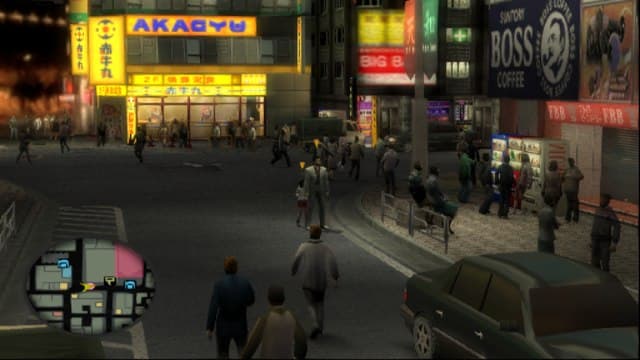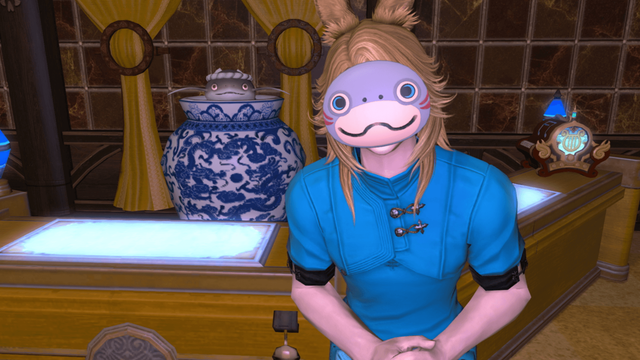Localizing a video game is a tremendous amount of work that goes beyond just simple translation. Normally, this task is performed by localization experts, either through outsourcing or through an internal development team, but one group of fans is taking on the ambitious task themselves.
Fan translations are commonplace, but few take it as far as The Geofront. With diligent bug fixes, editing, and even adding new features, this fan translation group has an unparalleled commitment to translating JRPGs from Japanese to English with the kind of care you’d expect from a publisher. (Note: For privacy reasons, members of The Geofront that were interviewed for this article are referred to as their screen names.)
The volunteer-based group focuses on translating Nihon Falcom’s popular Trails series: a long, complex franchise told across multiple subsets of games, starting with The Legend of Heroes: Trails in the Sky. The Geofront’s first project, which took several years, involved translating the entirety of The Legend of Heroes: Trails from Zero, a 2010 PlayStation Portable game released originally in Japan (it later came to the West via Steam, but only in Japanese). The title helps bridge the gap between the original Trails in the Sky trilogy and the more recent Trails of Cold Steel. Zero is one of two games in the series, unofficially dubbed the Crossbell games after the city where they take place, that never received official localization. At The Geofront, lead editor Zerker was one of many determined to make Zero playable to fans who don’t speak Japanese.
“Falcom took its storytelling chops to a whole new level with [Zero and its sequel], and I wanted others to be able to experience them too,” he tells Fanbyte.
The project to translate Zero began on the Heroes of Legend forum, a community dedicated to video game translations and rom hacking. Forum member Guren no heya kara began writing an English script for Zero. Unfortunately, he was unable to carry the project beyond its initial translation due to personal reasons, and the project was left unfinished in 2016. The team disbanded, but not before making the game’s files for the unedited version available online publicly as a download. Unfortunately, it was far from perfect. Guren built that version based on Zero’s original PlayStation Portable release, and while you could play it on PC, it was plagued with bugs, muddy resolution, and lacked modern quality-of-life features.
Shortly after the 2016 version’s files appeared online, a group of dedicated fans — who would later become The Geofront — picked up the project, but they also wanted to take it a step further.
“What makes the core of Geofront successful is a passion for the quality we saw in official translations,” Geofront programmer Ribose says. “We wanted to be able to enjoy the games that did not get translated at that level. We wanted consistent character writing, consistent terminology, and above all, a consistent, quality-tested writing style.”
Zerker was just starting college in 2016 and he had played through the original Zero and its sequel, Trails to Azure, with the help of his Japanese-fluent friends. While he didn’t understand every aspect of it, Zero’s themes and the attention to detail Falcom lavished on its world and characters inspired him to widen the game’s audience.

The following summer, he learned about the new effort to start where Guren’s project left off and he reached out to offer help with editing. He wasn’t expecting a response, but a user named Guan, the lead translator, accepted “by some miracle,” Zerker says, and Zerker became the project’s lead editor.
Ensuring a high level of quality meant devoting significant time and effort to Zero’s translation; the project was translated twice and routinely re-checked. The project grew to involve 12 volunteers, four of which were editors. However, at several points, Zerker was the only editor writing and revising the project’s script, which included over one million Japanese characters. Despite the project’s bulk, he says he appreciated the chance to grow.
“Not only was I getting writing experience daily, but I was also challenged to learn how to write lines that sound like an actual person. It’s pretty difficult at first,” he says.
To start, Zerker helped develop a set of rules to guide Zero and future work, which include adhering to previous style and terminology official localization teams use, and focusing on intent over literal meaning of words and phrases. He returned to the Sky trilogy for style inspiration, trying to develop a tone in keeping with the series’ official releases.
Still, there was plenty of room for developing a specific style of his own.
“I was constantly reading books for my English classes,” Zerker says. “Some books, like Catch-22 and White Noise were particularly influential on my personal prose. That certainly helped with the more serious, emotionally-charged scenes, like the rooftop scene in chapter two of Zero.”
The programming side of the project offered the team substantial freedom. They hoped to surpass the quality of the original releases by delivering a polished game, even incorporating and adapting certain features from games almost 10 years older than Zero.
One such feature was adding a message log, so players could view past conversations, similar to a feature in the series’ more recent releases. The lead programmer of the translation project created a working prototype within a week and integrated it into the final version. The team also added autosave features and multiple save slots, tweaked the menus so they resembled those from the Trails in the Sky games, implemented support for higher screen resolutions, and even made it possible for players to import voiceover files from the game’s Japan-only PlayStation Vita re-release.
A project of this size naturally had its share of challenges to overcome, including aged technology and a lack of essential tools necessary for implementing the team’s desired upgrades.
“The tools we started with were written by the previous team, and [they] left much to be desired,” Ribose says. “Over the years, we eventually replaced everything with our own technology or that based on more solid community tools.”
Standardized sets of commands in programming languages C and C+ streamlined programming across the project and, more importantly, helped create a customized launcher so people could actually play the game.
The biggest programming challenge for Ribose was implementing translated lines of character speech during battle.
As with many RPGs, characters in Trails from Zero speak during battle and when performing special attacks. Zero has that speech appear in a string of programming language that’s separate from the commands attached to characters’ skills. The Geofront used a custom decompiling tool called EDDecompiler to pick apart programming functions and understand the under-the-hood coding. However, the tool only had data for Zero’s sequel, and that was incomplete data at best. Ribose had to create a new process for the game to recognize the English text and display it at the right time.This was time-consuming work, with Ribose rewriting programming files as much as 20 times, in order for them to work with the translated version.
Text bugs, program launcher glitches, and the localizer’s twin nightmare of character limits and overflowing text kept the team busy up until the Zero translation patch was released. However, the result was worth the painstaking effort behind it: The patch has been downloaded nearly 60,000 times through The Geofront’s website, and that’s not even including unofficial methods, such as downloading mirrors or torrents of the files elsewhere.
Ribose recognizes that chance played a significant factor in the team’s achievements. Between personal issues, the project’s unpaid work, and the hurdles faced along the way, The Geofront’s project could have ended up incomplete and disbanded like Guren’s project before it. There was never any guarantee those working on the project could see it through.
“Much of the reason we did what we did was likely just down to being in the right place at the right time,” Ribose says. “While it was known that editing was taking longer than initially hoped, JoseJL [the project’s lead programmer] and I could use that extra year over expectation and continue developing the [translation patch]. If [the patch] had come out in 2019, it’s very likely it wouldn’t even have had the settings it did.”

The Geofront took steps to ensure chance wouldn’t be the deciding factor for future teams with the same passion. What started as just one dedicated fan project branched out into a second project under a new team. With YouTube creator KilLScottKill as lead editor, the second Geofront team has been working on Trails to Azure, and released its edited translation this past May.
Ys vs. Trails in the Sky, a fighting game combining the worlds of Trails and Falcom’s other flagship franchise Ys, is a third project currently underway. Though Zerker hopes it won’t be the last.
“In a way, we view The Geofront as a fan translation hub — a place where passionate people can collaborate and work on interesting games,” he says. “We want our projects to be the best that they can be; doing things half heartedly isn’t something we want. After all, most of these projects stem from us loving and having a passion for these games.”


